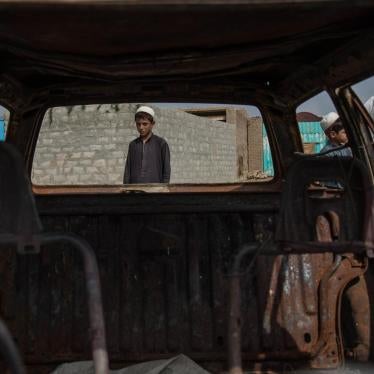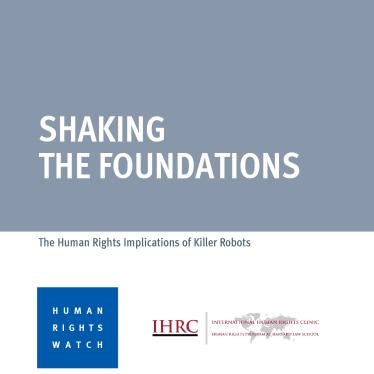Human Rights Watch charged that the Pentagon is pursuing a replacement for antipersonnel mines that violates the 1997 Mine Ban Treaty. The United States has said it will join the treaty in 2006
The prototype replacement system for "dumb" (non-self-destructing) mines has a feature that allows the weapon to be victim-activated. The American soldier would no longer select the target or control the weapon; instead the weapon would detonate itself. This feature, called the battlefield-override-system, turns the weapon into precisely the type of weapon the U.S. has said for years must be banned worldwide.
"This weapon will be an indiscriminate killer unable to tell a soldier from a civilian," said Stephen Goose. "The Pentagon's alternative to landmines is no alternative at all." Human Rights Watch, an international monitoring organization based in New York, is a founder of the International Campaign to Ban Landmines, which received the 1997 Nobel Peace Prize.
The prototype replacements for non-self-destructing mines were tested in October 1999, and the Pentagon is about to award a major contract for engineering and testing. A production decision is scheduled for July-September 2002, with as many as 523,000 units expected to be produced by 2005.
In September 1997, at the conclusion of negotiations on the Mine Ban Treaty (also known as the Ottawa Convention), President Clinton announced that the U.S. would join the treaty in 2006, if the Pentagon had identified and fielded alternatives to antipersonnel mines by that time. "The Pentagon is not likely to meet the 2006 deadline, and the replacement systems they've developed so far would not be compliant with the ban treaty," said Goose.
In addition to the battlefield-override-system, Human Rights Watch expressed concern about the RADAM program. Current U.S. policy is to end use of "pure" (stand alone) self-destructing antipersonnel mines by 2003. The "alternative" being pursued is to combine them in a projectile with existing antitank mines to create a new mixed mine system called RADAM. DoD has asked for $47.7 million for RADAM this year, with a final production decision to be made October-December 2000.
"The Pentagon is planning to spend $150 million to procure a new mine system that is illegal under the Mine Ban Treaty, and would have to be destroyed after 2006," said Goose. "Does that make sense?"
Human Rights Watch has presented a paper, "U.S. Programs to Develop Alternatives to Antipersonnel Mines," to the National Academy of Science's Committee on Alternative Technologies to Replace Antipersonnel Landmines, meeting in Washington, D.C., April 4-5, 2000. The Committee has been mandated by Congress to make independent recommendations about potential mine alternatives.
Human Rights Watch recommends eliminating the RADAM program, removing the target-activated feature from the non-self-destructing mine alternative, and making compliance with the Mine Ban Treaty a clear requirement for all aspects of the landmine alternatives program. Human Rights Watch also recommends exploring seriously non-material alternatives to antipersonnel mines (such as changes in doctrine and tactics) instead of the Pentagon's focus only on material solutions. Many military experts believe that alternatives to antipersonnel mines already exist, as evidenced by the fact that 137 countries have signed the ban treaty, including every NATO ally except Turkey.







